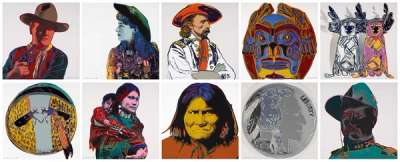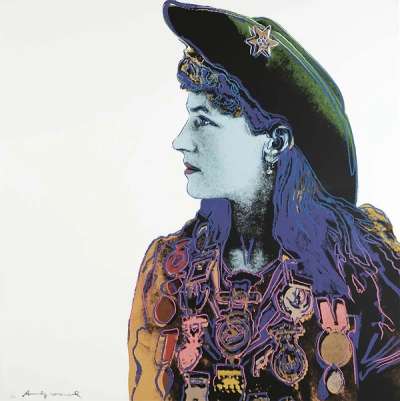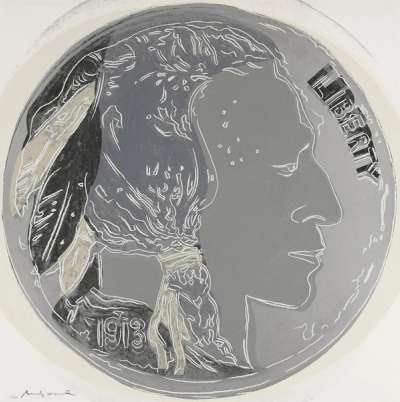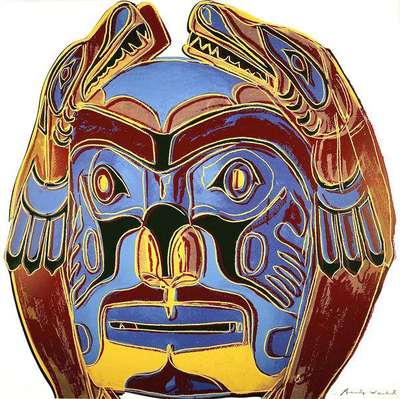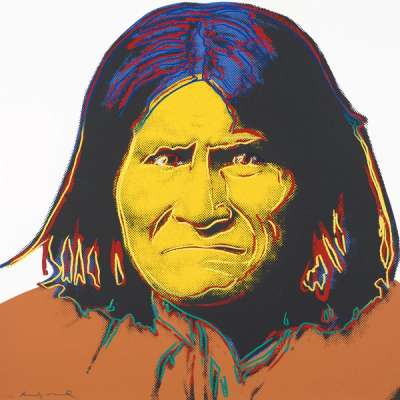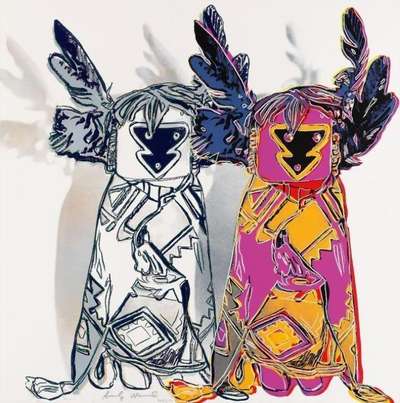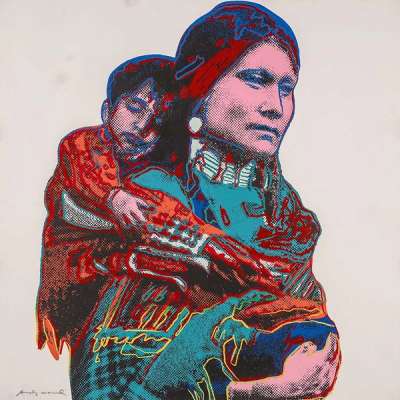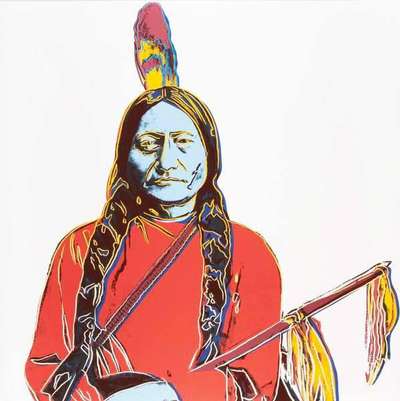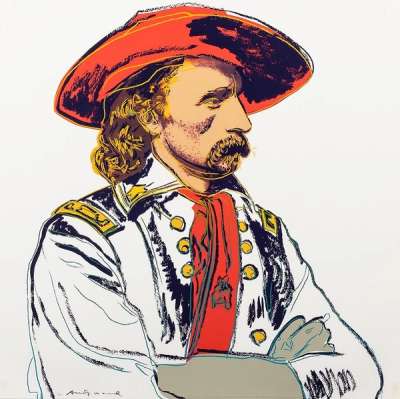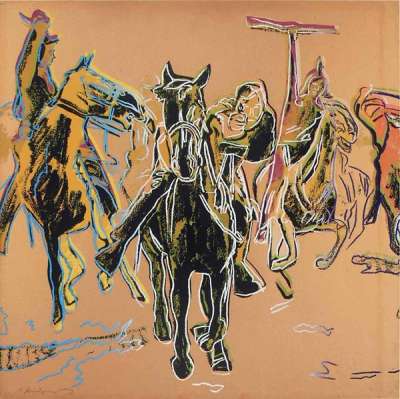
War Bonnet Indian (F. & S. II.373)

War Bonnet Indian (F. & S. II.373)
Signed Print
Andy Warhol
£80,000-£120,000Value Indicator
$160,000-$230,000 Value Indicator
$140,000-$220,000 Value Indicator
¥740,000-¥1,110,000 Value Indicator
€100,000-€140,000 Value Indicator
$810,000-$1,220,000 Value Indicator
¥15,610,000-¥23,420,000 Value Indicator
$100,000-$160,000 Value Indicator
AAGR (5 years) This estimate blends recent public auction records with our own private sale data and network demand.
There aren't enough data points on this work for a comprehensive result. Please speak to a specialist by making an enquiry.
Medium: Screenprint
Edition size: 250
Year: 1986
Size: H 84cm x W 91cm
Signed: Yes
Format: Signed Print
TradingFloor
Track this artwork in realtime
Watch artwork, manage valuations, track your portfolio and return against your collection
Meaning & Analysis
Printed in 1986, War Bonnet Indian (F. & S. II.373) is a signed screen print on Lenox Museum Board by Andy Warhol that depicts a Native American ready for battle. Gripping a spear, the man is wearing a war bonnet, traditionally worn by the male leaders of the American Plains Indians Nations who were greatly respected in their tribe. The figure is rendered in dramatic and bold colours, with red and purple dominating the composition. Black gestural lines delineate the man’s figure and the texture of his clothes and bonnet. Occupying the centre of the print, attention is drawn towards the Native American, poised for battle.
War Bonnet Indian (F. & S. II.373) is one of ten graphic screen prints that compose the Cowboys And Indians series. In this series, Warhol takes archetypal figures and objects that capture America’s romanticised vision of the American West. The distortion of the images through Warhol's playful use of colour reflects the distorted and contrived portrayal of the American West propagated through its depictions in popular culture, such as literature, film and television. Warhol's choice to depict a stereotypical image of a traditional Native American figure in his Pop Art style creates an ironic political commentary regarding the misconstrued impressions of the American West.
The print was made using Warhol's signature screen printing method which was developed to mass-produce imagery to be widely distributed. The technique therefore mirrors the way in which history has been distorted and propagated through popular culture.
